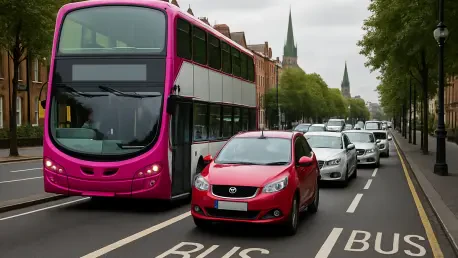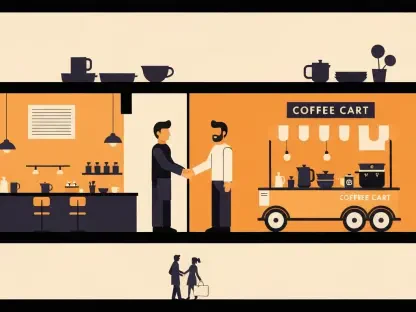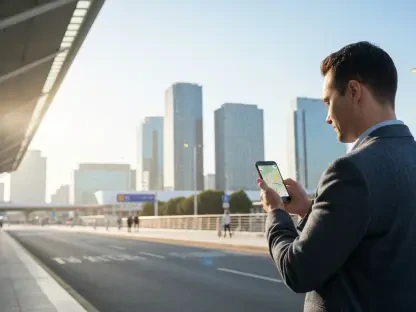Belfast, a city known for its vibrant urban pulse, is facing a critical challenge as traffic congestion continues to intensify, especially during peak hours and festive seasons. With the recent announcement from Infrastructure Minister Liz Kimmins about significant changes to transportation policies, the city is poised for a transformation in how it manages the flow of vehicles and prioritizes public transport. The extension of bus lane operating hours on major routes promises to reshape daily commutes, while complementary measures aim to ease the strain during high-traffic periods. This shift, part of a broader strategy to keep the city moving, raises important questions about its potential to alleviate bottlenecks or inadvertently create new hurdles for drivers. As Belfast braces for increased activity in the autumn and winter months, understanding the implications of these changes becomes essential for commuters, businesses, and visitors navigating the urban landscape.
Prioritizing Public Transport with Extended Hours
The decision to extend bus lane operating hours on key Belfast routes such as Ormeau Road, Lower Lisburn Road, and Malone Road marks a deliberate push to enhance public transport efficiency. Starting November 3, these lanes will operate from 7:30 a.m. to 9:30 a.m. and from 3:30 p.m. to 6:30 p.m., Monday through Friday. This adjustment, as outlined by the Infrastructure Minister, is designed to allow Translink buses to bypass the heaviest traffic periods, ensuring more reliable schedules for passengers. The updated timings target peak congestion windows, aiming to reduce delays that often frustrate commuters. Signage updates are planned in the coming weeks to inform road users of the new rules, with a strong emphasis on compliance to avoid disruptions. For many, this could mean quicker journeys via public transport, but it also places a responsibility on drivers to adapt by refraining from using or parking in these designated lanes during operational hours, potentially altering long-standing travel habits in the city.
Beyond the immediate logistical changes, the extended bus lane hours signal a broader shift in urban mobility priorities for Belfast. The focus on public transport reliability is expected to encourage more residents and visitors to opt for buses over personal vehicles, potentially reducing the number of cars on the road during rush hours. This could have a ripple effect, easing pressure on congested routes and improving air quality in densely populated areas. However, challenges remain for those who rely on driving for work or personal needs, as restricted access to certain lanes during expanded times may force route changes or longer travel durations. The success of this initiative will largely depend on public awareness and adherence to the new timings, as well as the ability of Translink to capitalize on the prioritized lanes to maintain consistent service. As the city monitors the rollout, feedback from commuters will be crucial in assessing whether this measure achieves its goal of smoother traffic flow.
Balancing Infrastructure and Festive Needs
In tandem with the bus lane adjustments, Belfast is implementing an earlier pre-Christmas roadwork embargo to minimize disruptions during the busy holiday season. Originally scheduled later, this embargo has been advanced to begin on November 10 and will continue until January 2 of the following year, covering key arterial routes in the city center. The decision responds to concerns from business and hospitality sectors, which anticipate a surge in visitors for shopping, work, and social activities during this period. By prohibiting non-essential roadwork, the measure aims to ensure smoother access to commercial hubs, supporting economic vitality at a critical time. Unlike other major towns in Northern Ireland, where a shorter embargo starts on November 24, Belfast’s unique status as a primary urban center necessitated this proactive step, highlighting the tailored approach to managing its distinct traffic dynamics.
This early embargo reflects a delicate balance between ongoing infrastructure development and the immediate needs of a bustling city during peak times. While essential projects must continue, the temporary halt on non-critical work demonstrates responsiveness to stakeholder input, prioritizing accessibility for both locals and tourists. The impact on traffic could be significant, as fewer construction-related delays may allow for better movement through central areas, especially during evenings and weekends when festive events draw large crowds. However, the challenge lies in coordinating essential maintenance outside this window to avoid future bottlenecks. For businesses, the reduced disruption offers a chance to maximize footfall without the frustration of road closures, but it also underscores the need for long-term planning to address infrastructure demands. As this measure unfolds, its effectiveness will be judged by how well it maintains Belfast’s appeal as a destination during the holiday rush.
Encouraging Alternative Travel and Shared Responsibility
Amid these policy changes, there is a clear call from authorities for Belfast’s road users to rethink their travel habits and embrace alternative options. Infrastructure Minister Liz Kimmins has urged commuters to consider public transport, utilize park-and-ride facilities on the city’s outskirts, or adopt active travel methods like walking and cycling. For those who must drive, planning routes to avoid the city center and using outer ring roads is advised, alongside strict adherence to traffic rules such as not blocking yellow box junctions. This push for diverse travel choices aims to reduce reliance on personal vehicles, thereby alleviating congestion on major thoroughfares. The emphasis on collective responsibility highlights the shared role of individuals in maintaining smooth traffic flow, particularly as the city gears up for heightened activity in the coming months.
The encouragement of alternative travel modes is not just a response to immediate congestion but also a step toward sustainable urban mobility in Belfast. Public transport, bolstered by extended bus lane hours, stands as a cornerstone of this vision, offering a viable substitute for car-dependent commutes. Meanwhile, park-and-ride options and active travel cater to different needs, providing flexibility for those willing to adapt. However, transitioning to these alternatives requires overcoming barriers such as convenience, weather concerns, and access to facilities. The success of this initiative hinges on effective communication and support systems to make these options appealing and practical for a broad audience. As traffic patterns evolve with these recommendations, the city’s ability to foster a culture of shared responsibility will play a pivotal role in determining whether these efforts translate into lasting improvements for all road users.
Reflecting on the Path Forward
Looking back, the implementation of extended bus lane hours and the advanced roadwork embargo in Belfast represented a concerted effort to tackle congestion and support economic activity during a demanding season. These measures, rolled out in early November, sought to prioritize public transport reliability while minimizing disruptions in the city center. Moving forward, the focus should shift to evaluating the long-term impact of these changes through data on traffic flow and commuter feedback. Exploring further investments in public transport infrastructure and expanding active travel networks could build on this foundation. Additionally, fostering ongoing dialogue with businesses and residents will ensure that future policies remain responsive to evolving needs. As Belfast continues to grow, sustaining this balance between mobility and accessibility will be key to preserving its vibrancy as a dynamic urban hub.









